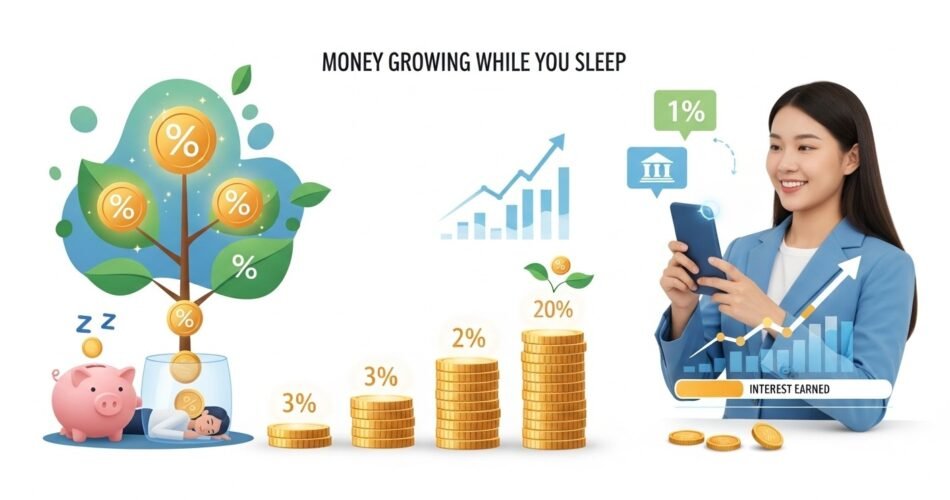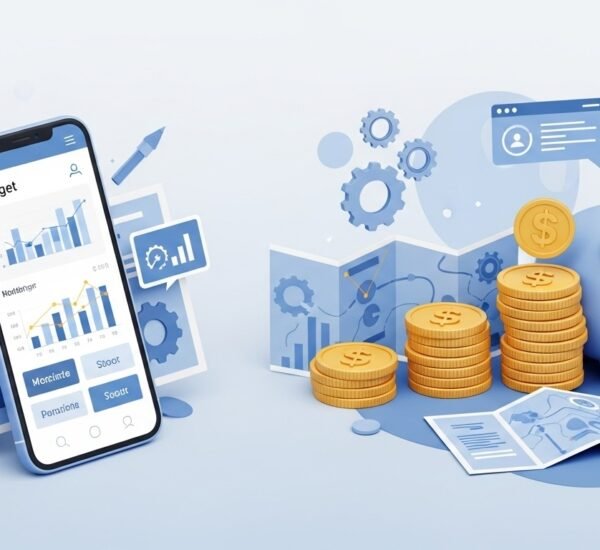A savings account is one of the most reliable financial tools for preserving wealth while earning steady returns. In the U.S. financial system, savings account interest plays a vital role in helping individuals grow their money safely and predictably. Understanding how savings account interest works, how it is calculated, and how to maximize your earnings is essential for effective financial management and long term wealth growth.
The Basics of Savings Account Interest
When you deposit money into a savings account, your bank pays you interest in exchange for allowing them to use your funds for lending and investment activities. This interest represents the cost banks pay for holding your money. Every savings account comes with a specific annual percentage yield, often referred to as APY. The APY reflects the total amount of interest you’ll earn over a year, factoring in the effect of compounding.
Compounding is the process where your earned interest is added to your principal balance, allowing future interest to be calculated on the new, higher amount. This creates exponential growth over time. For example, if you keep $10,000 in a savings account with a 4 percent APY, and the interest compounds monthly, your balance will continue to grow even if you make no additional deposits
How Savings Account Interest Is Calculated
Most banks in the United States calculate interest using a compound interest formula. The calculation typically involves multiplying your average daily balance by the interest rate, then dividing by the number of days in the year. The interest is then credited either daily, monthly, or quarterly, depending on the bank’s policy.
Understanding the compounding frequency is essential. Daily compounding means the bank adds interest to your account balance every day, resulting in slightly higher yields than monthly or quarterly compounding. Over time, this small difference can significantly impact your total return, especially for larger deposits.
The Role of Annual Percentage Yield (APY)
APY is a standardized measure that allows consumers to compare savings account interest rates across different banks. While the nominal interest rate might appear attractive, the APY takes into account how often interest is compounded, giving a more accurate representation of potential earnings. High-yield savings accounts, for example, often promote APYs well above the national average, sometimes exceeding 5 percent during favorable market conditions.
Choosing a savings account with a competitive APY is one of the most effective strategies for maximizing returns. However, customers must also consider other factors, including minimum balance requirements, withdrawal limitations, and the bank’s credibility.
The Difference Between Traditional and High Yield Savings Accounts
Traditional savings accounts, typically offered by brick and mortar banks, usually provide lower interest rates due to higher operational costs. High yield savings accounts, primarily available through online banks, offer significantly higher rates because these institutions save on overhead expenses and pass those savings to customers. Many U.S. consumers are shifting toward online banking to take advantage of better savings account interest rates and flexible account management.
When comparing savings accounts, it’s important to examine both the interest rate and the bank’s reliability. Federal Deposit Insurance Corporation (FDIC) insurance provides protection of up to $250,000 per depositor, per institution, ensuring your money remains safe even in uncertain economic conditions.
How Savings Account Interest Rates Are Determined
Savings account interest rates in the United States are influenced by a variety of economic factors. The Federal Reserve plays a central role by setting the federal funds rate, which affects all lending and deposit rates across the financial system. When the Fed raises interest rates, banks generally increase savings account interest rates to attract more deposits. Conversely, when the Fed lowers rates, savings returns decline.
Inflation also has a direct relationship with savings interest rates. During periods of high inflation, the real value of savings may decline even if nominal interest rates appear favorable. Therefore, understanding the difference between nominal and real interest rates is crucial for financial literacy.
How Often Banks Pay Interest on Savings Accounts
Most U.S. banks credit savings account interest monthly, but some may do so daily or quarterly. The frequency of interest payment affects how fast your money grows. Accounts that compound interest daily and credit it monthly often provide the best combination for consistent growth. Always read your bank’s policy carefully, as terms can vary between institutions.
Taxation on Savings Account Interest
Savings account interest earned in the U.S. is considered taxable income. Banks are required to report interest earnings to the Internal Revenue Service (IRS) if they exceed $10 in a year. Even if you earn less, you’re still obligated to report the amount on your tax return. Understanding how savings account interest is taxed helps you plan better for your net returns and prevents compliance issues.
Some savers use tax-advantaged accounts or diversify into other instruments such as certificates of deposit (CDs) or money market accounts to balance yield and tax efficiency.
Maximizing Savings Account Interest
To maximize your savings account interest, focus on a few strategic approaches. Start by maintaining a higher balance since most banks offer tiered interest rates that increase with larger deposits. Compare rates regularly, as banks frequently adjust their offerings to stay competitive. Many consumers switch to online banks to secure higher APYs without the restrictions found in traditional institutions.
Automating your savings by setting up regular transfers from your checking account helps maintain consistency and ensures that your funds earn interest continuously. Reviewing your account statements also allows you to monitor interest accrual, detect any policy changes, and identify opportunities for better yields elsewhere.
Impact of Inflation and Economic Trends
Inflation is the silent competitor of savings account interest. While your nominal balance might grow, inflation can erode purchasing power over time. If the inflation rate exceeds your savings account interest rate, your real returns turn negative. For instance, if inflation stands at 3 percent and your APY is 2.5 percent, your real rate of return is effectively 0.5 percent.
Economic conditions, central bank decisions, and consumer spending trends all influence how savings account interest evolves over time. Staying informed about macroeconomic shifts allows you to make data-driven decisions and adjust your savings strategy accordingly.
Choosing the Right Bank for Your Savings
Not all banks are equal when it comes to offering competitive interest rates. Online institutions like Ally, Discover, and American Express Bank consistently rank among the best for high yield savings accounts. However, your choice should also depend on accessibility, customer service quality, and the bank’s stability.
Always ensure the bank is FDIC insured and transparent about how savings account interest is calculated and credited. Reading customer reviews and expert analyses helps you make an informed decision that aligns with your financial goals.
Savings Account Interest vs. Other Financial Instruments
While savings accounts provide stability and liquidity, they aren’t designed for high returns. Other instruments such as money market accounts, certificates of deposit, or U.S. Treasury securities may offer higher yields but usually require locking funds for a fixed term. Balancing your portfolio with a mix of liquid and long-term instruments allows for both growth and accessibility.
The key advantage of a savings account lies in its risk free nature. Unlike investments in stocks or mutual funds, savings account balances do not fluctuate with market volatility, making them ideal for emergency funds and short-term savings goals.
The Future of Savings Account Interest in the U.S.
The landscape of savings account interest continues to evolve with the growth of fintech and digital banking. Modern platforms are introducing automated savings tools, AI based rate tracking, and integration with personal finance management apps. Consumers today are more empowered than ever to compare rates and optimize earnings in real time.
As the Federal Reserve adjusts monetary policy in response to inflation and economic data, savings account interest rates will likely fluctuate. Savvy savers who remain adaptive and informed will consistently find ways to secure the best returns.
Conclusion
Understanding how savings account interest works is fundamental to effective personal finance. From APY and compounding to taxation and inflation, every element contributes to how much your savings grow. By choosing a high yield savings account, monitoring economic trends, and maintaining disciplined savings habits, you can ensure your money works as hard as you do.
Savings accounts are not merely a place to park cash; they are an essential part of a well-balanced financial strategy. Whether you are saving for an emergency fund, a home purchase, or future investments, leveraging competitive savings account interest rates can help you achieve long-term financial stability and peace of mind.



